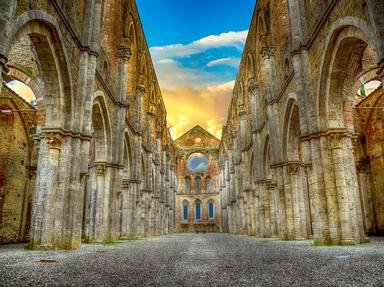Quiz Answer Key and Fun Facts
1. Huns - Avars - Khazars - Bulgars - Patzinaks - ?
2. Baghdad - Merv - Bukhara - Samarkand - Khotan - Dunhuang - Lanzhou -Chang'an - ?
3. Ireland - York - Shetland - Iceland - Greenland - Vinland - ?
4. Avicenna - Averroes - Avenzoar - ?
5. Nicaea - Dorylaeum - Jerusalem - Ager Sanguinis - Adrianople - ?
6. Osman I - Murad I - Murad II - Mehmed the Conquerer - Suleiman the Magnificent - ?
7. Saint Sernit (Toulouse) - Sainte Madeline (Vezelay) - Sant Ambrogio (Milan) - Durham Cathedral - Saint Trophime (Arles) - ?
8. Luebeck - Hamburg - Rostock - Danzig - Riga - Bergen - Bruges - ?
9. Krak des Chevaliers - Saone - Carrickfergus - Chillon - Carcassonne - Mont Saint Michel - Burg Hochosterwitz - Bran - ?
10. Goliard - Menestrel - Troubadour - Trouver - ?
Source: Author
Mr5
This quiz was reviewed by FunTrivia editor
bloomsby before going online.
Any errors found in FunTrivia content are routinely corrected through our feedback system.

